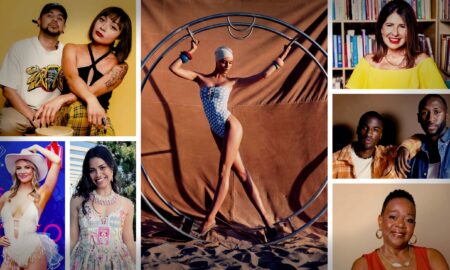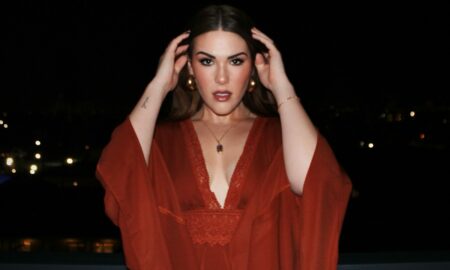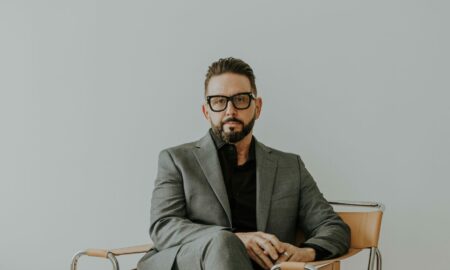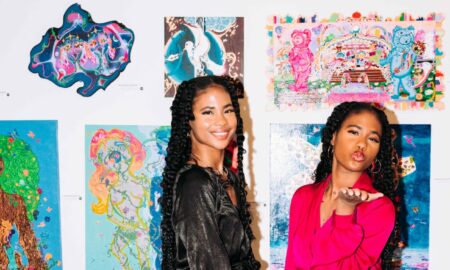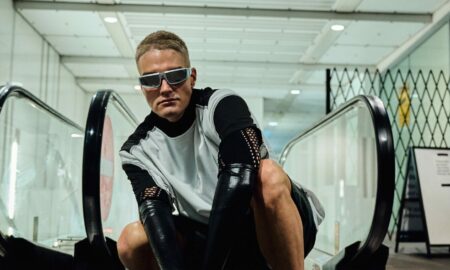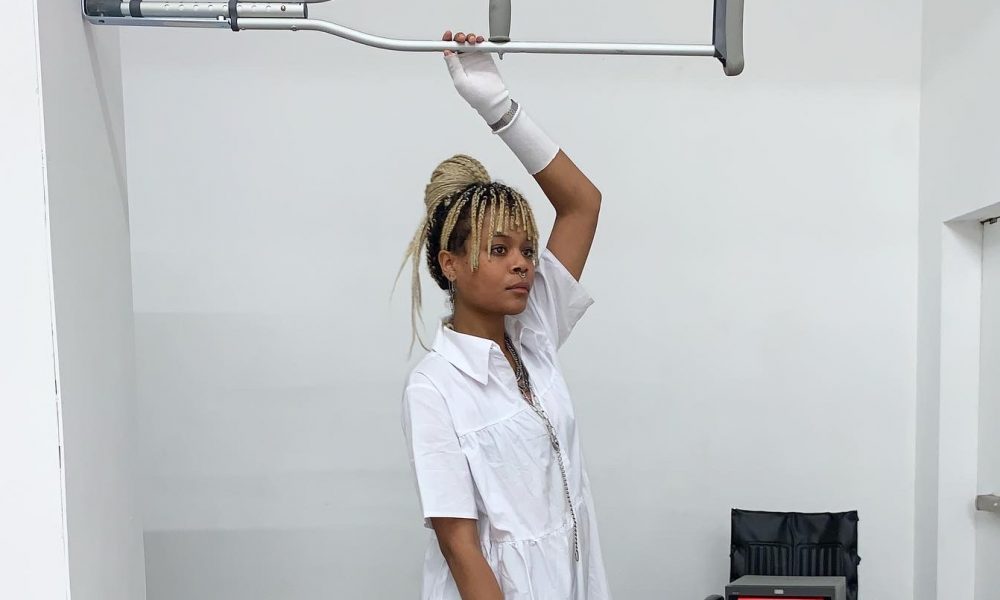

Today we’d like to introduce you to Panteha Abareshi.
Panteha, let’s start with your story. We’d love to hear how you got started and how the journey has been so far.
I began creating my work purely as a coping mechanism, several years back when my health began deteriorating and I was also struggling with my mental health. I was self-taught and began painterly/illustrative work. I got my GED, and took the years between that and applying to undergraduate programs to work on my practice. I initially had no intention of anyone ever seeing the work I was making, let alone becoming a professional artist, but slowly I began publishing my work online, and the ball really began rolling after I had my first piece in a gallery exhibition. I decided to attend USC’s school of art, choosing it over the art institutions I’d been accepted to because of the full-ride they were offering me, and I moved to LA. By the time I began my undergrad, my work had grown, evolved and greatly improved- but I was also feeling like I wasn’t fully articulating myself through my painterly/illustrative work anymore. I began experimenting with performance and video privately, and I realized very quickly that I needed to use my own body as a medium in my work in order to truly articulate all that I felt and all that I aimed to get across. Now my practice is centered around performance, video and installation.
Has it been a smooth road?
It certainly wasn’t a smooth road. I think that I felt a lot of insecurity in the beginning, not feeling like I could call myself an “artist,” and struggling to know if there was space for me and my work in the art world. On top of that, I am living with a serious illness and disability that pose their fair share of obstacles daily and often prevents me from working as much and as hard as I’d like on something. Of course, this struggle with my body and health is the subject of much of my work, so obstacle becomes material. I also think that the monetization of one’s art practice is something difficult to navigate. My older illustrative/painterly work was and is much more easy to monetize than the performances, videos and ephemeral sculptures that I make. It’s something that’s difficult to discuss, but at the end of the day, the “art world” is an industry like anything else. Contending with that is, and always will be a challenge.
We’d love to hear more about your work and what you are currently focused on. What else should we know?
My work is fundamentally rooted in my existence as a Sick/ill/disabled body. I have several health conditions, the root of which is my sickle cell zero beta thalassemia, a genetic blood disorder that causes debilitating pain, and bodily deterioration that both increase with age. Being a chronically ill body has shaped my experience into one that is extremely and highly isolating. The nuances of disability and chronic illness are lost on the average able-bodied individual, and the marginalization, erasure and violence that I have endured from it alone is devastating. In combination with my personal notions of gender, racial and sexual identity, I am fully immersed in otherness. There is so little discussion surrounding this, and little to no exploration of these topics in contemporary work, and I aim to push against that lack of representation.
In my practice, I am warping concrete, physical forms into highly disembodied abstractions. Through my work, I aim to discuss the complexities of living within a body that is highly monitored, constantly examined, and made to feel like a specimen. Taking images that are recognizable as human forms, and reducing them to gestural forms is a juxtaposition of my own bodies objectification and dissection. I examine, re-examine and then aim to dismantle our current definitions of the “body” and “health.” These definitions rely on standards of able-bodiedness that are ultimately impossible to achieve, but also greatly essentialize the experience of the ill/disabled. My work is a means of processing the tremendously overwhelming emotions that come with debilitating, degenerative illness, and allows me to face things such as my own mortality, and loss of ability.
Being in hospital for as far back as I can remember, my condition has informed my conceptions of body and self. What are the implications of being told you are unhealthy, fragile, and defective from a young age? How does the early and reinforced knowledge of decreased lifespan and a life of increasingly poor health, pain and bodily deterioration influence the relationship between one and their body? Identity becomes a daunting concept when there is a rift formed between one’s mind and their body when the body seemingly functions with a mind of its own, malfunctioning and causing harm. Able-bodied individuals do not realize the supreme privilege in trusting and knowing their own body. Identity as we know it is so highly linked to bodily form and linked to aspects of bodily existence that are taken for granted. I aim to explore these questions this region of identity, pushing to articulate my own fears, insecurities and confusions around my illness-identity. My abstracted imaging of my own body is heavily influenced by being so regularly in the hospital, as I am constantly experiencing a very unique form of objectification in which my body is truly treated as a pound of flesh, the vitals that it produces, and the malfunctions it abounds in. In my performance work, I am pushing my own vulnerability and objectification to discuss the realities of mortality and fragility, and the complexities of empowerment in the face of literal powerlessness.
Much of my performance work plays with auto-objectification and self-abjectification. I push my body to the limits of its ability, as a means of regaining some semblance of control over it. The body I am in is a hostile environment, it antagonizes me, and makes me feel as though I am fighting with it every day to be able to function. In my work, I am able to push and pull against my body, its weakness, its fragility its vulnerability. I bend and shape my body as a medium in my work because it is my most valuable, and most painfully defunct tool.
How do you think the industry will change over the next decade?
I am hoping for a great increase in both representation, and in ACCESSIBILITY. The artworld is currently fundamentally inaccessible in so many ways, and I hope that can change drastically in the next few years. I also believe that there will be more experimental media and performance art being seen more regularly at large art institutions. The need for diversification in museum and gallery spaces is dire, and while it is slow, I think that there is a shift towards that happening. People are calling for under-represented and marginalized voices to be able to tell their story, instead of having it told for them. Visibility needs to be much, much higher.
Contact Info:
- Website: https://www.panteha.com
- Email: [email protected]
- Instagram: https://www.instagram.com/pantehart/
- Vimeo: https://vimeo.com/panteha







 Image Credit:
Image Credit:
Panteha Abareshi
Suggest a story: VoyageLA is built on recommendations from the community; it’s how we uncover hidden gems, so if you or someone you know deserves recognition please let us know here.

